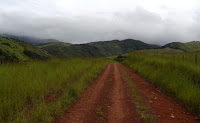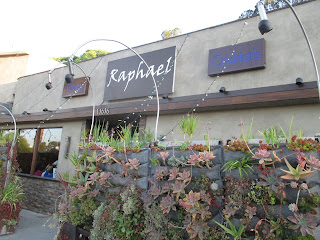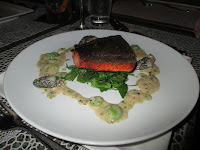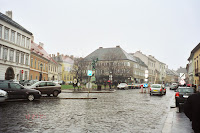
Costa Rica is a major international vacation and adventure-travel destination that tourism has become the nation's number one source of income. Despite the boom in vacationers and American retirees, Costa Rica remains a place rich in natural wonders and biodiversity. You will find unsullied beaches that stretch for miles, small lodgings that haven't attracted hordes of tourists, jungle rivers for rafting and kayaking, and spectacular cloud and rainforests with ample opportunities for bird-watching and hiking. Of course, you can also find a handful of large luxury resorts and golf course as well.
You will arrive at the Juan Santamaria International Airport located in the city of Alajuela which is about 20 minutes from downtown San Jose. From the airport, you have so many choices to enjoy your Costa Rican holiday. You can simply stay in San Jose and enjoy the sights and cultures of this great city and/or visit the natural beauty that this country has to offer. Whichever you choose, you won't be disappointed. Here are a few suggested highlights to include in your Costa Rican vacation.
Travel up to the Northern Zone and a naturalist's dream to
Monteverde to explore the cloud forest and head to Arenal Volcano for the hot springs and hikes through the neighboring forest. Monteverde translates as "green mountain" and that's exactly what you'll find at the end of the steep and widy rutted dirt road that leads here up the Interamerican Highway towards Niguragua. All roads to Monteverde are rugged . . . very rugged! Many are painful and poorly maintained roads. A four-wheel-drive car for the extra clearance and the rainy season is a must. It will take over 2 hours to get to the Sardinal/Santa Elena/Monteverde turnoff road from San Jose. From there it is another 1-1/2 hour to go the 12 miles where the roads are extremely rough, unpaved dirt and gravel that makes the trip slower going. It surely will be a bumpy ride to Santa Elena and Monteverde after dodging all the potholes on the Interamerican Highway.





The
Monteverde Biological Cloud Forest is a private non-profit reserve administered by the Tropical Science Center, and contains 6 distinct ecological zones It is open daily from 7am to 4pm with an entrance fee per person. Before venturing into the forest, look around the information center where several guidebooks are available. Because the entrance fee to Monteverde is valid for a full day, you may want to consider an early-morning walk with a guide and then heading off on your own directly after the hike or after lunch. The guide will certainly point out and explain a lot than what you can get on your own. You can find more than 100 species of mammals including 5 species of cats, over 400 species of birds including 30 kinds of hummingbirds, tens of thousands of insect species (over 5000 species of moths) and 2,500 species of plants (420 kinds of orchids) in the Monteverde Cloud Forest Preserve. The area is acclaimed as one of the most outstanding wildlife refuges in the New World Tropics. The
Santa Elena Cloud Forest Reserve (3 miles north of Santa Elena) is is a state owned non-profit reserve straddling the Continental Divide at an elevation of 1,700 m (5,600 ft.). Cloudier and wetter than the other reserve because of higher elevation, this forest reserve contains 7 miles of trails and a canopy observation tower. The Santa Elena Cloud Forest Reserve features great views of the Arenal Volcano and the Lake Arenal and similar habitat and wildlife to the Monteverde Cloud Forest Reserve, but a lot less visitors.

 SkyWalk
SkyWalk is a network of forest paths and suspension bridges that provides visitors with a veiw previously reserved for birds, monkeys, and the much more adventurous traveler. The bridges reach 128 ft. above the ground at their highest point. The tour includes about 1.5 mile of trails and 5 suspended bridges across deep canyons at the level of the treetops. The longest bridge is about 800 feet in length. Anybody that can walk for 2 hours can live this experience. There is no strenuous climb or mud and the trails are very well maintained. It takes an average of 2 hours, much more if you pay attention to all the different plants, trees and wildlife along the way. The temperature can be cool in these mountains so wear pants, good walking shoes and bring a light jacket or sweater. Insect repellent is not necessary but suntan protection lotion is. Binoculars and poncho or umbrella are recommended since this is a Cloud Forest. At the entrance, you can find a restaurant & souvenir shop. There is also a hummingbird garden where you can watch dozens of these amazing creatures flit around. Because there is a 12 person maximum capacity per bridge, reservations are highly recommended.

The sister attraction to Sky Walk is
Sky Trek canopy tour. Sky Trek is a system of trails, suspension bridges, and zip lines that offers visitors the opportunity to observe, and appreciate tropical vegetation from different vantage points, above the rain forest canopy. This is one of the most extensive canopy tours in the country with 9 cable systems integrated with a gorgeous aerial tram which takes you 2625 feet through primary forest. Sky Trek is of larger scale with more zip lines and platforms, longer trails, and suspension bridges than any other canopy tours. The longest line is some 2525 feet long and 456 feet high above the forest floor. Further, the construction is of the highest quality, utilizing protective and secure materials, including metal platforms with mesh-covered steel rails which prevent falling or sliding. The tour lasts between 2.5 and 3 hours. Anybody in average physical condition can do any of the canopy tours, but they are not for the faint-hearted or acrophobic.
 From Monteverde, you can make your way towards Tilaran and Lake Arenal to Tabacón and La Fortuna off Route 142. As you enter Tabacón, almost all the hotels, restaurants, and shops in the area are along the main road outside Tabacón and La Fortuna. You will be able to see the massive Arenal Volcano directly in front of you. Arenal is one of the world's most regularly active volcanos. The first thing you should know is that Arenal Volcano borders a region of cloud forests and rainforests, and the volcano's cone is often socked in by clouds and fog. Many people come to Arenal and never get to see the exposed cone. Moreover, the volcano does go through periods when it is relatively quiet.
From Monteverde, you can make your way towards Tilaran and Lake Arenal to Tabacón and La Fortuna off Route 142. As you enter Tabacón, almost all the hotels, restaurants, and shops in the area are along the main road outside Tabacón and La Fortuna. You will be able to see the massive Arenal Volcano directly in front of you. Arenal is one of the world's most regularly active volcanos. The first thing you should know is that Arenal Volcano borders a region of cloud forests and rainforests, and the volcano's cone is often socked in by clouds and fog. Many people come to Arenal and never get to see the exposed cone. Moreover, the volcano does go through periods when it is relatively quiet.
The second thing you should know is that you can't climb Arenal Volcano -- it's not safe due to the constant activity. Several foolish people who have ignored this warning have lost their lives, and others have been severely injured. The most recent fatalities occurred in August 2000. Still, waiting for and watching Arenal's regular eruptions is the main activity in La Fortuna and is best done at night when the orange lava glows against the starry sky. Although it's possible simply to look up from the middle of town and see Arenal erupting, the view is best from the north and west sides of the volcano along the road to Tabacón and toward the national park entrance. If you have a car, you can drive along this road, but if you've arrived by bus, you will need to take a taxi or tour.
Arenal National Park constitutes an area of more than 7,114 acres, which includes the viewing and parking areas closest to the volcano. The park is open daily from 8am to 10pm and there is a nominal admission fee per person. The trails through forest and over old lava flows inside the park are gorgeous and fun. (Be careful climbing on those volcanic boulders.) However, at night the view from inside the park is no better than on the roads just outside it.

In geological terms, the Arenal Volcano is relatively young, only some 4000 years old. Prior to the 1968 eruption, the volcano’s last major eruption has been dated at around 1500 AD and lava flows from this period have been tentatively identified keeping a nearly perfect cone-shaped, rainforest blanked volcanic mountain with minor fumarole activity. The Arenal Observatory Lodge actually grew out of several extremely humble buildings originally built for housing scientists and researchers from the Smithsonian Institute and Earthwatch. The
Arenal Observatory Lodge is the best place to experience the thrill and beauty of the Arenal volcano because of its location, its long history as a research center and the knowledge and the experience of its staff and guides. The Arenal Lodge has standard rooms that are very sparsely decorated if you choose to stay here overnight as the volcanologists did with meals served in a dining room with a glass wall facing the volcano.
Tabacón Hot Springs Resort & Spa is the most-established, extensive, and popular resort in the Arenal area -- and for good reason. Many rooms have excellent, direct views of the volcano. It is located at the site of the former village that was desrtoyed by the 1968 eruption. They have a series of variously sized pools, fed by natural springs, and are spread out among the lush gardens. At the center is a large, warm, spring-fed swimming pool with a slide, a swim-up bar, and a perfect view of the volcano. One of the stronger streams flows over a sculpted waterfall, with a rock ledge underneath that provides a perfect place to sit and receive a free hydraulic shoulder massage. The resort also has a spa across the street from the resort offering professional massages, mud masks, and other treatments. Make appointments in advance if interested. Entrance fees are roughly $30 for adults and $20 for children under 9. The hot springs are open daily from noon to 10pm.




































































